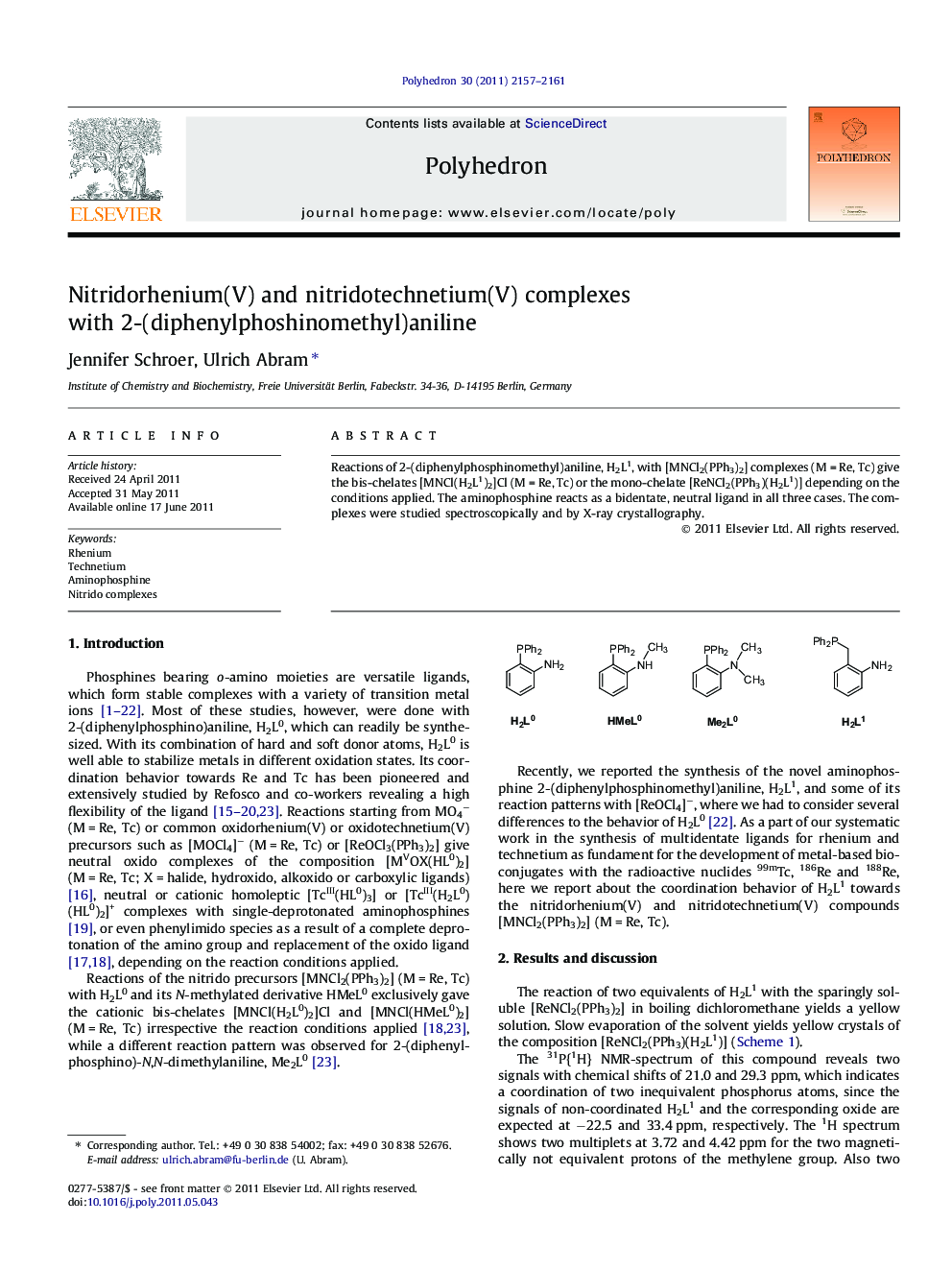| Article ID | Journal | Published Year | Pages | File Type |
|---|---|---|---|---|
| 1338574 | Polyhedron | 2011 | 5 Pages |
Reactions of 2-(diphenylphosphinomethyl)aniline, H2L1, with [MNCl2(PPh3)2] complexes (M = Re, Tc) give the bis-chelates [MNCl(H2L1)2]Cl (M = Re, Tc) or the mono-chelate [ReNCl2(PPh3)(H2L1)] depending on the conditions applied. The aminophosphine reacts as a bidentate, neutral ligand in all three cases. The complexes were studied spectroscopically and by X-ray crystallography.
Graphical abstractReactions of 2-(diphenylphosphinomethyl)aniline, H2L1, with [MNCl2(PPh3)2] complexes (M = Re, Tc) give the bis-chelates [MNCl(H2L1)2]Cl (M = Re, Tc) or the mono-chelate [ReNCl2(PPh3)(H2L1)] depending on the conditions applied. The aminophosphine reacts as a bidentate, neutral ligand in all three cases.Figure optionsDownload full-size imageDownload as PowerPoint slideHighlights► Nitrido complexes of Re and Tc were prepared with 2-(diphenylphosphinomethyl)aniline (H2L1). ► Bis-chelates were isolated for both metals. ► The Mono-chelate could only be obtained for Re. ► The novel ligand did not deprotonate during the reactions.
